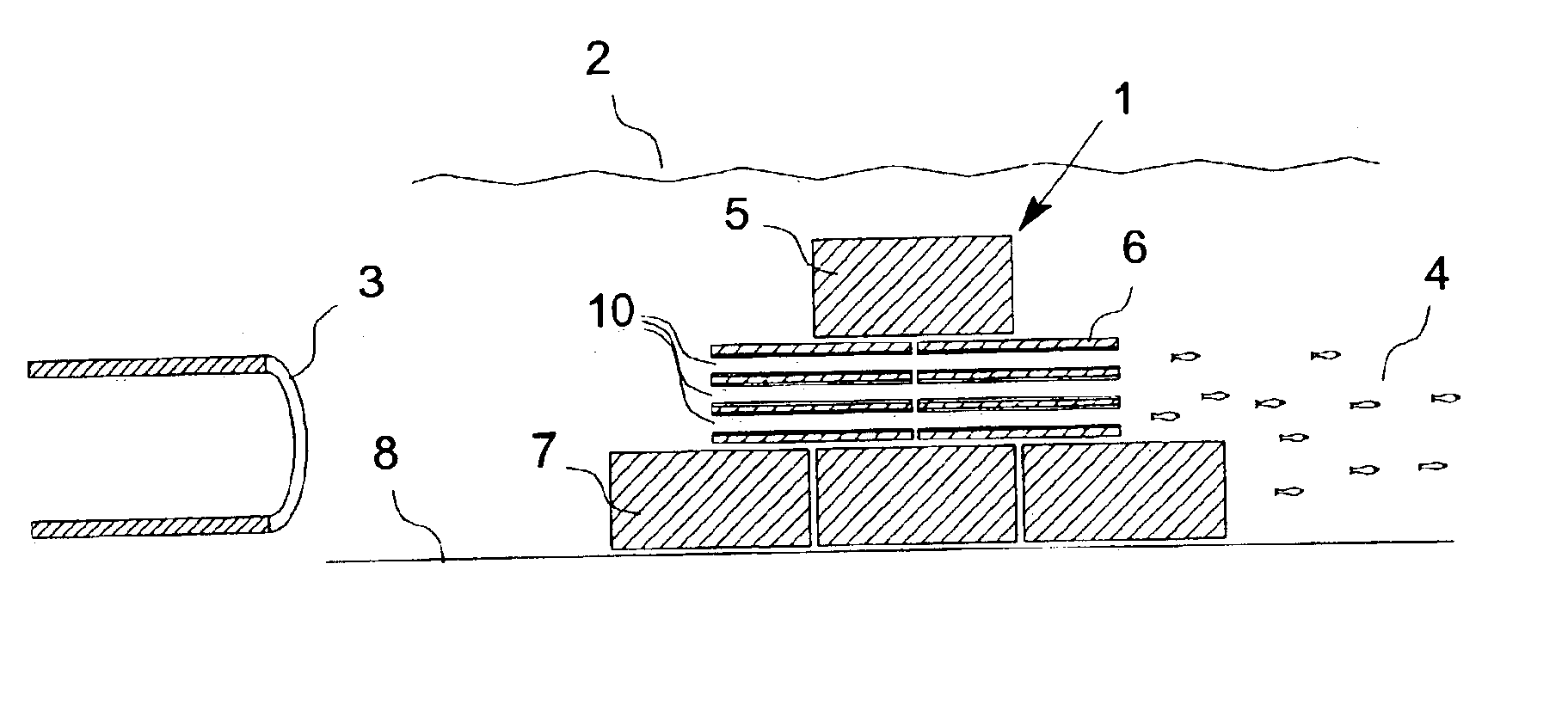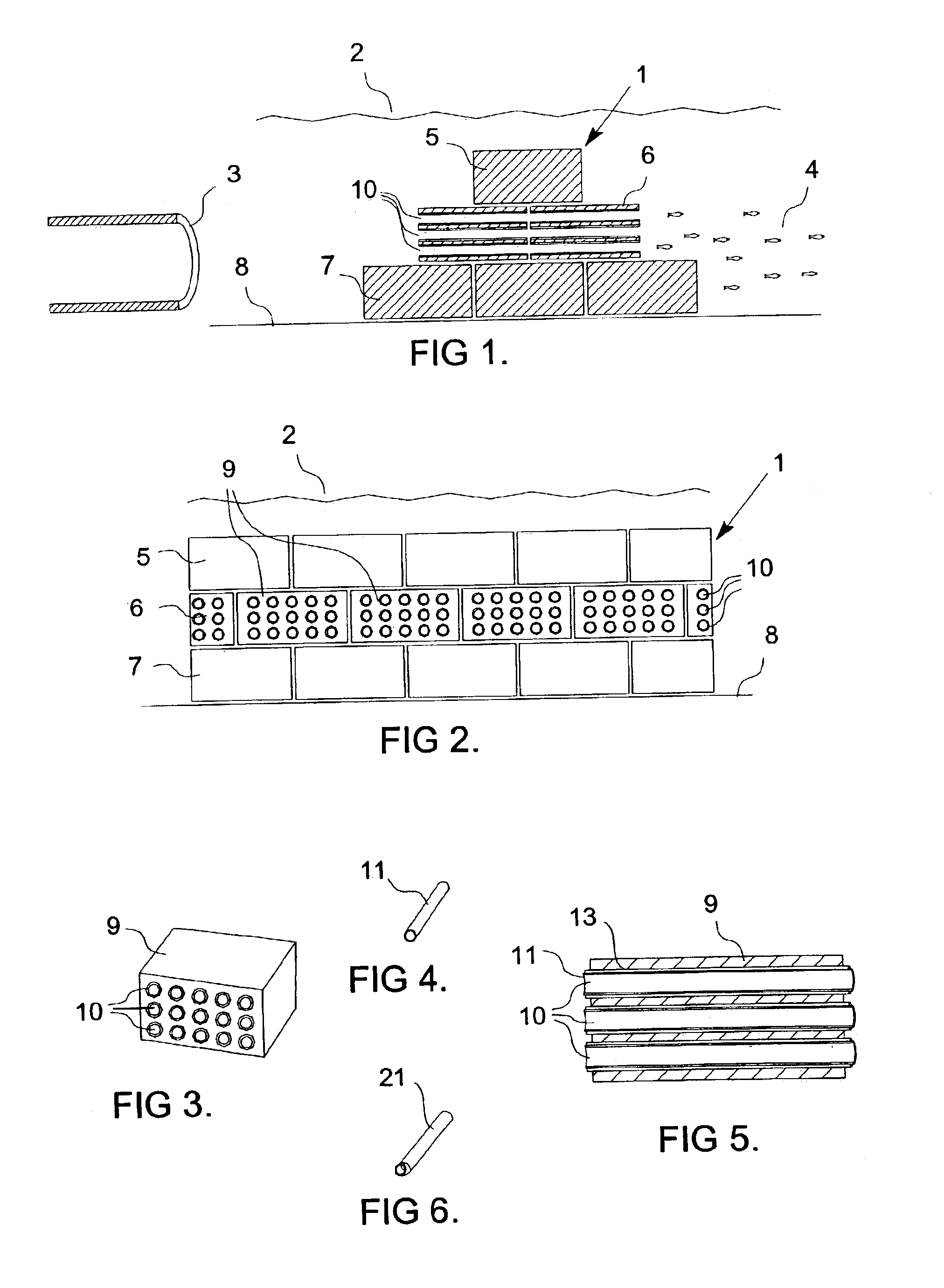Porous dike intake structure for fish diversion
a technology of intake structure and porous dike, which is applied in the field of fish diversion, can solve the problems of no means of preventing attachment, no means of reducing fish passages, and no patents on porous dike or breakwaters teach the concept of porous dike or the means of excluding fish using small passages through the intake structur
- Summary
- Abstract
- Description
- Claims
- Application Information
AI Technical Summary
Benefits of technology
Problems solved by technology
Method used
Image
Examples
Embodiment Construction
[0017]A preferred embodiment of the present invention will now be described with reference to the drawings. Referring now to FIG. 1, a water intake 3 collects water which must flow either over or through submerged dike 1 of the invention. The dike 1 of the invention, in one preferred embodiment, comprises a top portion 5 below the water surface 2, a central portion 6, and a bottom portion 7 which rests on the bottom 8 of the lake or other body of water. The fish 4 are kept away from water intake 3 by the dike 1.
[0018]Referring now to FIG. 2, a cross-section of the porous dike 1 is shown. The bottom portion 7 comprises water-impermeable, preferably solid, blocks; the central portion 6 comprises blocks 9 with flow passages 10, and the top portion 5 comprises generally opaque blocks which will appear to a fish as an obstruction. Preferably the blocks in the top portion 5 are solid, for ease of manufacture and stability in the dike 1. The upper limit of the top portion 5 is preferably d...
PUM
| Property | Measurement | Unit |
|---|---|---|
| Angle | aaaaa | aaaaa |
| Width | aaaaa | aaaaa |
| Width | aaaaa | aaaaa |
Abstract
Description
Claims
Application Information
 Login to View More
Login to View More - R&D
- Intellectual Property
- Life Sciences
- Materials
- Tech Scout
- Unparalleled Data Quality
- Higher Quality Content
- 60% Fewer Hallucinations
Browse by: Latest US Patents, China's latest patents, Technical Efficacy Thesaurus, Application Domain, Technology Topic, Popular Technical Reports.
© 2025 PatSnap. All rights reserved.Legal|Privacy policy|Modern Slavery Act Transparency Statement|Sitemap|About US| Contact US: help@patsnap.com



